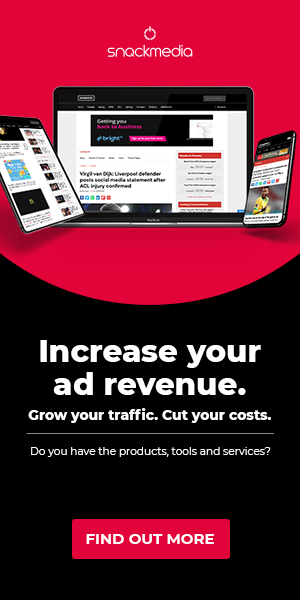Value for Money: Putting a £ sign on social media posts with AI-driven platform Vensy
For as long as social media has existed, it has been a vehicle to gauge popularity. Who has more followers and whose content is the most insightful or the funniest?
It wasn’t long before people started to wonder how they could monetise their mass appeal. As brands started to get involved, the landscape changed dramatically from what it looked like at the very start.
It’s been years since the old joke about the intern running the Twitter account was relevant, and these days it’s a well thought-out process with a group of people bouncing ideas off each other. On the other side of the coin, there are influencers and personalities who have large audiences these brands want to get in front of – and a whole industry was born on the back of that.
But that leads to some inevitable questions – what’s all this worth? How much money can be returned from it? If you’re paying a team of people to work on this, where’s the return on investment? And just how effective can influencer marketing really be?
This question is even more pronounced when those with their hands on the brand purse strings ask why this is important enough to spend money on: after all, Instagram and Twitter are not owned platforms and any spend on social media is returned only indirectly in sales or brand awareness in other areas.
But Tunde Salau, co-founder of the AI-driven platform, Vensy, which helps brands advertise at scale through sports influencers, thinks that quantifying the impact that social media and influencer marketing has will be a vital component to the industry in the future.
“Just like any other media platform, its vital for brands to have clarity on how much they should be spending to advertise and distribute their content. It was the demand from our clients, that led us to putting a £ sign on the social media value of posts across platforms, and we’ve seen that its provides them with further transparency on the ROI they have received back within influencer marketing campaigns – absolutely necessary in times when budgets are precious and finite.”
Some might be sceptical of any attempt to put a £ sign onto a tweet or Instagram post but in a way that’s the holy grail we’re talking about here. After years of tweaks to the paradigm of what marketers see as valuable we’re looking for the next big thing.
First it was the headline number of followers that an account had – 1 million followers equals 1 million people ready and eager to buy your product, right? Then reach was the buzzword – a better sign of how useful a certain account can be and how likely it is to be amplified by shares and likes, leading to even more exposure.
Today, we’ve moved on to looking at the levels of engagement that social accounts get, using that as a metric for how impactful their posts really are: the problem is, who’s doing the engaging and how exactly are they reacting?
These questions, once answered, will help to put figures on the value of social media posts and of the account doing the posting in the first place.
“At Vensy we help brands to advertise through sports influencers at scale. We work with the likes of Formula E, Arsenal FC and O2 to distribute branded content via our network of 4000+ influencers. What our clients like the most is both the simplicity in how we work and the guaranteed deliverables.”
“Given a set budget, we use our AI-driven technology to automatically identify combinations of sports influencers that will deliver a certain number of views / impressions of the brand’s content and subsequently carry out the activation of the influencer campaigns.”
Accuracy here is going to be the key. Analysing posts from social media users, understanding their personality traits and their level of importance to stakeholders. But being able to know the age and purchasing propensity of the people who engage with the posts of an influencer (or indeed a team or a league) means that brands can better target their social media advertising and be more confident of their probabilities of success.
The social media landscape is always changing and it’s only natural that our ideas of best practice will change again. Now that there’s an almost universal acceptance of the wider benefits to brands and sports teams of being effective on social media and the next step might be quantifying that.
About author
You might also like
Interview: Nielsen Sports’ Spencer Nolan Discusses Covid-19’s Impact on Sport Media Rights and the Commercial Sport Landscape
Digital Sport’s Rupert Pratt and Thomas Smith recently sat down with Nielsen Sports Managing Director for the UK & Ireland, Spencer Nolan, to discuss Covid-19’s impact on sport media rights
Snack Media acquire Facebook’s largest global sports publisher, GIVEMESPORT
Snack Media today announced that its acquisition of GIVEMESPORT will create one of the largest sports publishers in the UK, further strengthening its offering to advertisers, rights holders and independent media owners.
The seven essentials for achieving successful sports branding
By Daniela McVicker When it comes to sports, great branding is a must. Your brand influences how people see your company or team. It helps you to forge connections with









